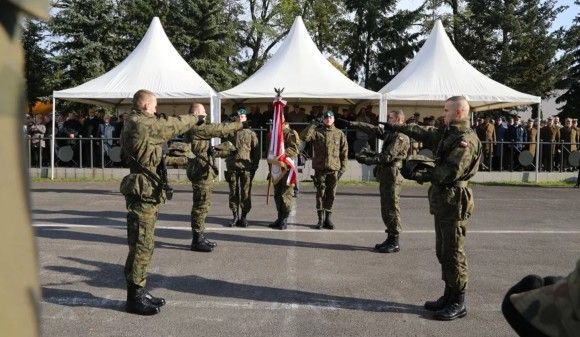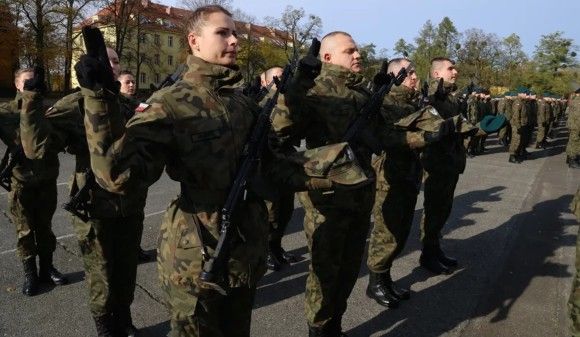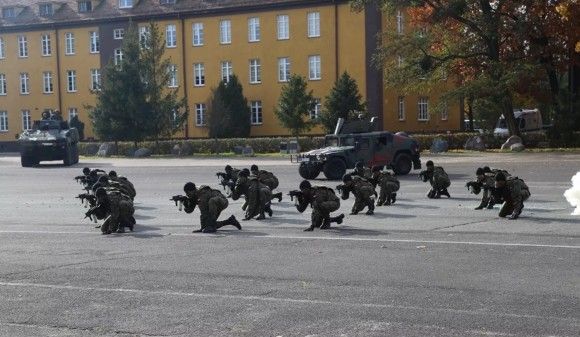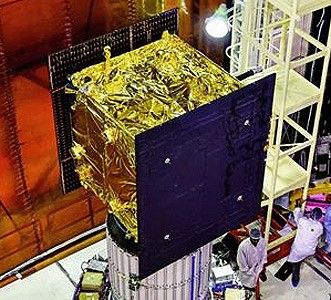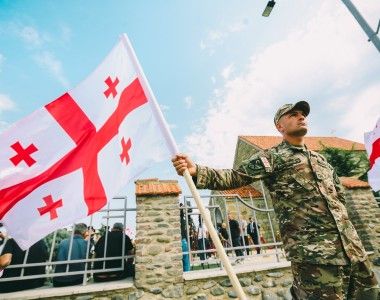New Liwiec Counter-Battery Radars for the Rocket and Tube Artillery Units of the Polish Army
The primary tasks for the LIWIEC Artillery Reconnaissance Radar System (RZRA - Radiolokacyjny Zestaw Rozpoznania Artyleryjskiego), currently operated by the land component of the Polish Armed Forces, include detection and identification of active enemy artillery firing positions and provision of firing solutions allowing own artillery units to conduct fire missions in an accurate manner.
The article has been prepared by PIT-RADWAR S.A
Working within the automated fire control system, the RZRA counter-battery radar delivers reconnaissance data from an area of more than 1000 square kilometres, in any weather conditions, at night and during the day, shortening the reaction time and increasing the effectiveness and efficiency of fire missions assigned to own artillery units. This type of radars is going through another phase of dynamic development, conditioned by a changing threat environment profile, evolving operational methods and range and precision of fire provided by the artillery assets.
Project History
The prototype of the RZRA LIWIEC counter-battery radar system designed and created at the Industrial Telecommunications Institute (Przemysłowy Instytut Telekomunikacji, currently known as PIT-RADWAR) within the period between 2002 and 2006 was the first system of this kind in Poland. When the RZRA system prototype was being developed, experience gathered by the Institute throughout the implementation of the BRDA project has been used, within the scope of selected radar assemblies and signal processing algorithms.
The radar prototype successfully passed the preliminary and qualification tests back in 2006. The test programme has confirmed the fact that the suite conforms with the assumed tactical and technical requirements. Back in 2007, RZRA LIWIEC counter-battery radar system has received the Defender award, as the most compelling product presented during the 15th edition of the Kielce MSPO International Defence Industry Salon. During the very same year, PIT-RADWAR, on the basis of an agreement signed with the Polish Ministry’s of Defence Armament Policy Department, has begun work on the implementation study, covering the manufacturing and delivery of three examples of the LIWIEC RZRA systems, included in the sample lot.
Delivery of three sample examples took place within the period between 2009 and 2010. Since then, the said radars have been used operationally by the Polish Armed Forces during field training exercises and other missions and tasks. One of the RZRA LIWIEC radars, between 2010 and 2012, was being used in Afghanistan, at the Polish base in the Ghanzi province, detecting and providing early warnings about potential enemy shelling, and supporting the operations of own artillery assets.
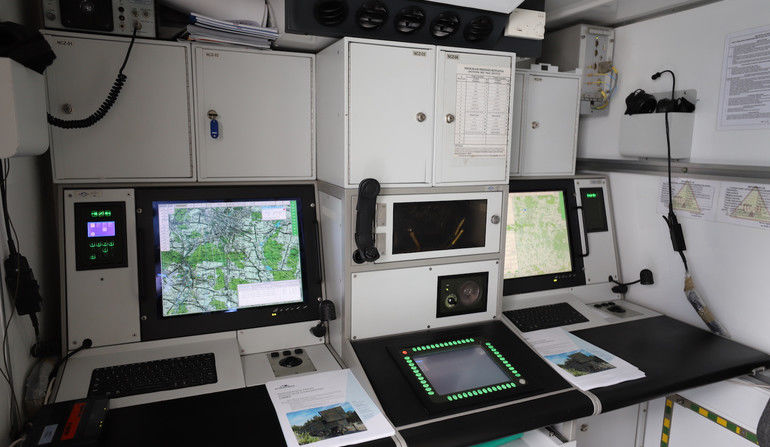
In the year 2016 RZRA LIWIEC counter-battery radars were being used to provide security during the NATO Summit in Warsaw and the World Youth Day organized in Cracow. The operational use of the systems, abroad and domestically, in a variety of operational and weather conditions, allowed the user to gather new experiences that have been used and implemented in the process of preparing production of new examples of the RZRA LIWIEC radar systems.
Modifications and Delivery of New RZRA LIWIEC Radars
Three RZRA LIWIEC radars have been retrofitted, in 2015, with portable operator stations (referred to as WSOP), on the basis of the experience gathered during the Afghan deployment, allowing the user to control all of the radar functions at a remote location. Some elements of the WSOP system may be used to visualize the recognize data at the command station in real time, and directly, for the purpose of enhancing the situational awareness and supporting the battle management process.
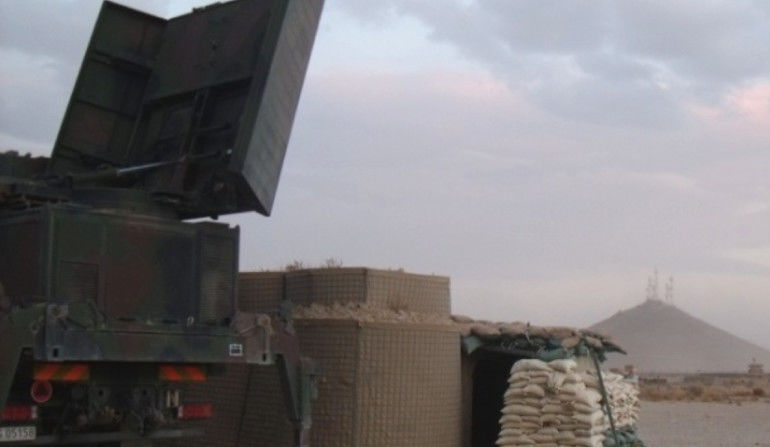
The agreement that is being currently worked on by the PIT-RADWAR facility, signed back in 2013, with the Armament Inspectorate of the Polish Ministry of Defence acting as the ordering party, assumes that seven examples of the RZRA LIWIEC systems would be delivered for the Polish Army, along with a logistics package securing the radar-related maintenance and training initiatives. Modifications introduced in the new RZRA LIWIEC Radars result from the technological advancements and the conclusions of the operational and military test programmes, as well as from the operational experience and the experience gathered by PIT-RADWAR throughout the experimental studies and research works related to other radar-based systems.
The changes introduced in the equipment and software of the RZRA LIWIEC systems have made it possible to expand the radar’s operational envelope and make the operator work conditions more comfortable. One of the most important modifications in case of the system is the replacement of the analogue transmitting-receiving solutions with modern digital counterparts, enhancing the radar’s potential, reliability and resistance to jamming.
Since the beginning of 2017, the first two newly manufactured RZRA LIWIEC systems have been handed-off, along with a logistics package, moreover training has also been conducted for the future crews and instructors. More systems of this type are to be delivered within the period between 2017 and 2018, enhancing the Polish defensive potential.
Development of Radar and Battlefield Reconnaissance Solutions
The directions of development that could be followed in case of the reconnaissance systems dedicated for rocket and artillery component of the army are resulting from the technological advancements made within the scope of own (LANGUSTA, KRAB, RAK, HOMAR) and enemy’s armament, and from the changed rules of engagement, concerning the use of such systems. Modernization of the reconnaissance systems are to increase the detection range concerning the active firing positions, increase the accuracy of defining the coordinates of those positions and of the locations hit by the round, use the ability to provide early warning about the shelling results and rapidly neutralize the threats, and develop the systems that would destroy the rounds in flight.
At the same time, the fact that the Armed Forces would have more RZRA LIWIEC radars and other (counter-battery) radars capable of detecting small objects and firing positions (such as the ZDPSR BYSTRA system) at their disposal, would make it possible to develop data-fusing solutions interconnecting a variety of artillery reconnaissance systems, enhancing the level of battlefield situational awareness.
Thus, one of the main development directions would be seen in modernization of the RZRA LIWIEC system itself, e.g. through introduction of an active AESA-class antenna and digital and software based technologies related to the transmission and reception section within the radar. Within that scope, PIT-RADWAR has already gathered rich experience and tested its solutions, through implementation of the BYSTRA development work, and through the R&D initiative known as SAJNA. Fitting the future RZRA LIWIEC systems with active Gallium Nitride-based antenna arrays and utilizing the new capabilities offered by such antennas through introduction of multi-channel analysis and signal processing methods would relevantly expand the operational capabilities offered by the aforesaid radars, also allowing the user to utilize them for the purpose of carrying out reconnaissance deep behind the enemy lines.
At the moment, the high potential offered by the RZRA system and confirmed ability to detect UAVs and small calibre rounds, as well as ground, moving and fixed, and maritime objects, both make it possible to utilize the LIWIEC radar as a multifunctional and multi-purpose battlefield reconnaissance sensor, placed within a net-centric battle management suite.
The data fusion system interconnecting a network of reconnaissance sensors within an integrated C4ISR solution would make it possible to create new, usable information through usage of the complementary profile of the data coming from radars and other reconnaissance subsystems.

Utilizing the modern data fusing and processing methods within the sensor networks for artillery reconnaissance and counter-battery systems, with a particular emphasis placed on the information provided by the counter-battery radars such as LIWIEC and air defence radars such as BYSTRA, operated by a number of units of the land forces and offering a RAM (Rocket, Artillery, Mortar) objects detection ability would greatly enhance the situational awareness on the battlefield within the following scope:
-
Increased credibility of information, achieved through enhanced detection parameters at the systemic level, increased detection probability, decreased probability of false alarms and shortened target detection time required;
-
Enhancement of the resulting data accuracy, especially with regards to the accuracy of determining the coordinates of the location where the rounds/rockets were fired and where they would hit;
-
Redundancy and heightened resistance of the reconnaissance system to potential attempts of disabling its capacity.
Summary
As a result of implementation of the LIWIEC counter-battery radar delivery agreements, the artillery units of the Polish Armed Forces would have nine modern domestically manufactured radars at their disposal. Considering the development of artillery assets, as a result of the domestically pursued modernization programmes, the reconnaissance suites should be further developed to allow for effective utilization of the newly acquired abilities. This may be achieved through utilization of the domestic industry’s potential, particularly by following the below path:
-
Development and delivery of further RZRA LIWIEC radars,
-
Introduction of radars with new capabilities in the rocket, artillery and air-defence units of the Armed Forces, such as, e.g. the ZDPSR BYSTRA system,
-
Implementation of new technologies within the scope of using the sensor networks and data fusion across multiple sources.
The article has been prepared by PIT-RADWAR S.A

